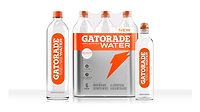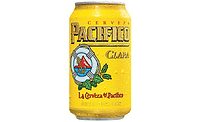Taking On The High Price Of Energy
Energy costs, whether they are related to running trucks on distribution routes or running the plants in which products are made, are top of mind these days. In July, we examined ways in which beverage companies can reduce transportation fuel costs; this month we look at the benefits of reducing energy consumption in office and production facilities.
According to the Energy Information Administration,
total U.S. natural gas consumption in 2006 is projected to fall below 2005
levels by 1.7 percent and then increase by 4.2 percent in 2007. Electricity
consumption is expected to increase 0.6 percent in 2006 and 1.4 percent in
2007. Coal consumption for electric power is projected to grow by 0.3
percent in 2006 and another 1.6 percent in 2007.
When it comes to alternative energy sources,
environmental concerns are often the driver, and many beverage companies
are making changes for just that reason. But even if green isn’t your
color, there are incentives for saving energy.
Thanks to the Energy Policy Act of 2005, businesses
that install qualified fuel cell power plants can qualify for a 30 percent
tax credit for the purchase price through the end of next year. A 10
percent credit is available for stationary microturbine power plants and 30
percent for qualifying solar equipment.
It also includes tax
savings for energy-efficient commercial buildings that reduce annual energy
and power consumption by 50 percent compared to the American Society of
Heating, Refrigeration and Air Conditioning Engineers 2001 standard. Many
states offer additional rebates or tax breaks for new energy installations.
Not ready to invest in totally new systems? The U.S.
Department of Energy suggests a process for reducing costs of current
systems, and says a typical plant can realize annual energy cost savings of
10 to 20 percent by performing a thorough plant-wide assessment.
Suggestions include:
Track energy bills —
Determine how much you pay for energy at your facility to get a baseline
from which to measure progress. Gather information on electricity, natural
gas and fuel oil for the past year and determine total annual energy costs
by fuel type and per unit.
Identify big uses —
Identify the equipment that uses the most energy. Look for large pieces of
equipment and equipment that runs most of the time or has periodic, but
substantial, start-up energy requirements.
Identify low-cost projects —
Get rapid returns by identifying and implementing easy projects such as
operating furnaces and boiler systems at or close to design capacity and
using proper insulation. The U.S. Department of Energy provides a full list
of low-cost energy-saving projects for specific plant systems at
eere.energy.gov.
Get management support — Management support is essential to going after opportunities
and getting the training needed to identify and make improvements.
Form an energy team — Energy teams track and report energy use, identify energy-saving
opportunities, develop an energy plan and implement cost-saving measures.
They typically include members from plant and process engineering,
maintenance engineering, procurement and production.





